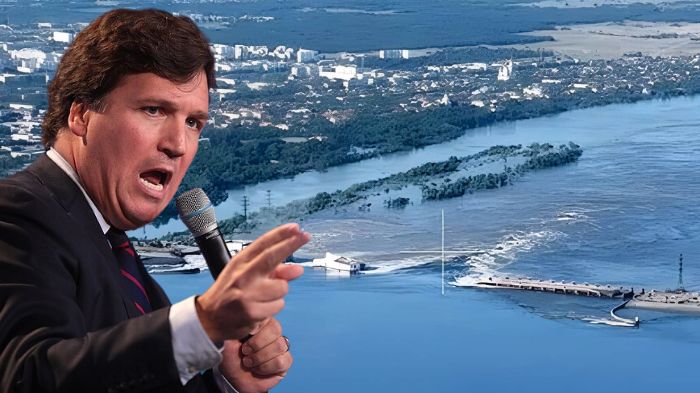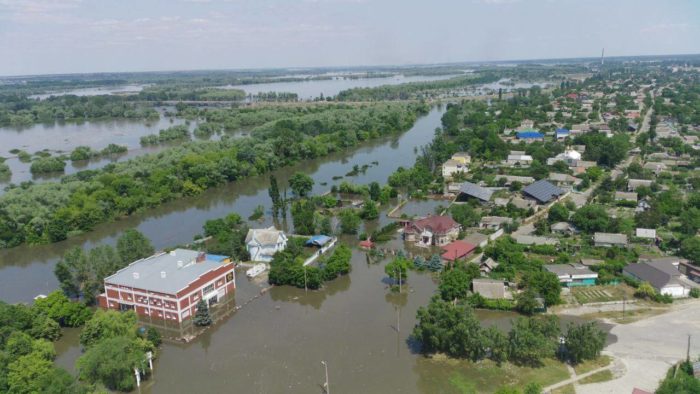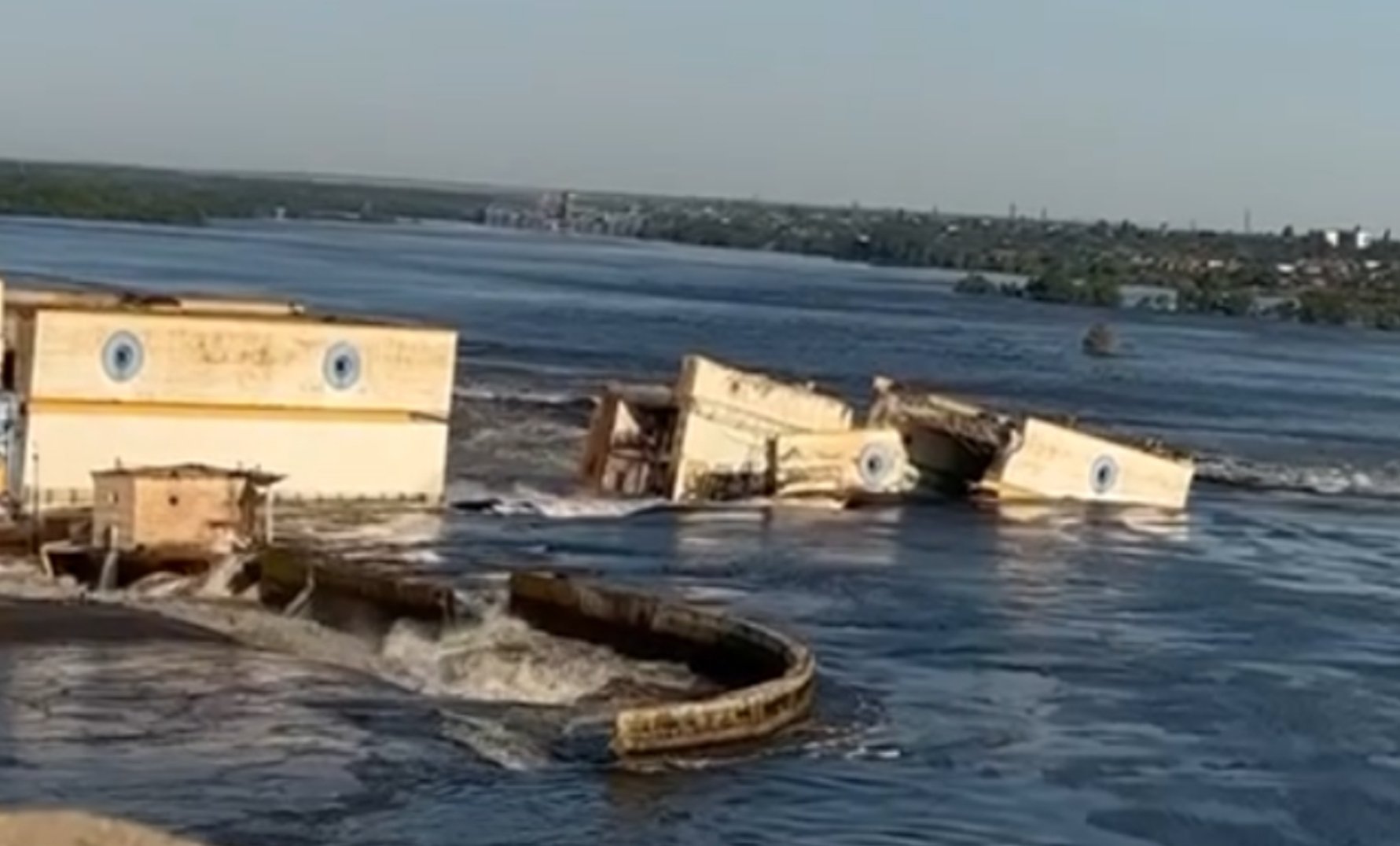The destruction of the Russia-occupied Kakhovka Hydroelectric Plant on 6 June unleashed a humanitarian and environmental cataclysm in southern Ukraine.
In all of the country’s history, the fallout of this man-made disaster is comparable to the Chornobyl nuclear plant meltdown, with massive damage done to agriculture, infrastructure, economy, and environment.
Shortly after the explosion, Ukraine’s military identified Russia as the culprit. The occupiers first denied that anything happened, only to later blame Ukraine for intentionally unleashing massive floods on its own country.
Ukrainians now face not only false equivalencies by the international media that put Kyiv’s and Moscow’s statements on equal footing but also outright accusations of complicity.
Tucker Carlson, whose falsehoods contributed to his ex-employer Fox News losing almost $800 million in a lawsuit settlement, hopped on his usual anti-Ukrainian and pro-Kremlin narrative in his recent 10-minute-long Twitter video.

Mixed in with thinly veiled anti-Semitic comments against President Volodymyr Zelensky, Carlson argues that Kyiv is the most likely culprit since the Kakhovka dam is “Russian,” sits in “Russian” territory, and its destruction hurts Russia the most.
His claims do not hold up under scrutiny, however.
1. According to experts, the plant was most likely destroyed from the inside
According to Ihor Syrota, the head of the state-owned Ukrhydroenergo company, the Kakhovka dam was extremely resilient to external damage, built to withstand even a nuclear strike.
Experts interviewed by The New York Times concurred that structures like this are designed to resist extreme pressure. Therefore, it is highly unlikely that the dam could be ruptured by an outside attack, such as a Ukrainian missile or artillery strike.
In the fall of 2022, during Ukraine’s successful offensive into Kherson Oblast, the area surrounding the Kakhovka dam suffered some damage, as Kyiv’s forces hit a bridge that sits atop the dam. Some of the sluices were reportedly impacted by the explosion. Nevertheless, the dam did not suffer such damage that would cause a rupture.
While the Times-cited experts said that a spontaneous failure due to the combination of previous shelling and mismanagement is not completely impossible, it would still be a very “suspicious” explanation. This explanation is also inconsistent with the patterns of water discharge and damage observed on satellite images of the dam: if it were damaged, it should have been letting through more water, and the damage should have
So far, experts have concluded that an internal, enclosed explosion is the most feasible way of doing serious damage to the dam. According to the chief expert of Ukrhydroproject Mykola Kalinin, the dam was built to withstand an external attack but not an explosion from the inside. He supposes that Russian hydropower experts gave instructions on planting explosives in open spans and inside the turbine hall of the Kakhovka hydroelectric power plant, which allowed to destroy this resilient construction.
Since Russians were the only ones with such access to the facility, this seriously limits the list of suspects.
2. Dam was controlled by Russia since February 2022
The Kakhovka Hydroelectric Power Plant and the adjacent dam were built on the Dnipro River in 1956, designed as a source of electric power and irrigation for the surrounding regions.
The structure helped ships to sail down the Dnipro River, an important trade and transport corridor for Ukraine.
The 2,155-kilometer-square Kakhovka Reservoir, positioned upstream from the dam, served as a main water source for many settlements in the area and supplied the nearby Zaporizhzhia Nuclear Power Plant, the largest nuclear station in Europe.
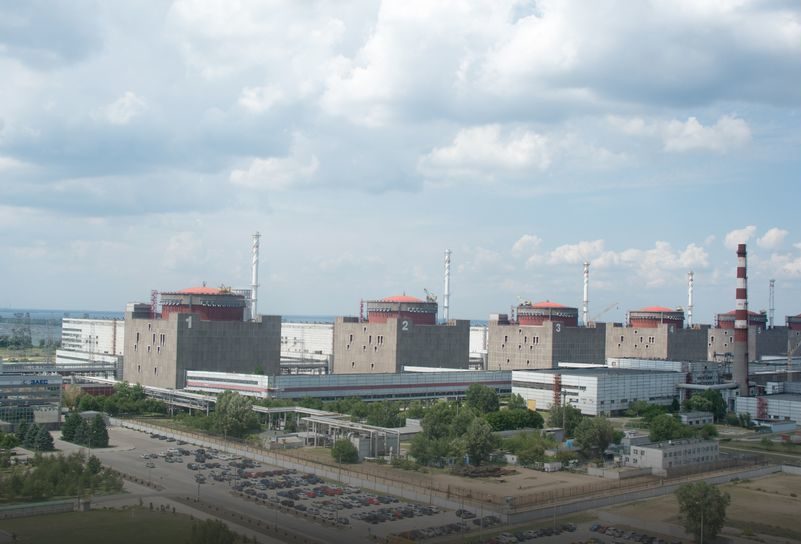
Russian forces captured the plant and the nearby city of Nova Kakhovka shortly after the invasion’s start on 24 February 2022. Moscow retained complete control over the plant’s operations throughout the war. Since then, its new masters did not shirk from weaponizing the dam.
Russia partially destroyed the dam on 18 October 2022 as its forces retreated from Kherson oblast. In February 2023, Russia began
draining the Kakhovka Reservoir, endangering the Zaporizhzhia plant, agriculture, and the environment. And in the leadup to the explosion, Russia had, on the contrary, greatly raised the level of the Kakhovka Reservoir, possibly aiming for maximum flood destruction.
Moreover, Russian control of the durable dam precludes the physical possibility of its destruction by Ukraine. In 1941, retreating Soviet forces blew up the predecessor of the Kakhovka dam with 20 tons of explosives and at least several tons were needed to destroy the several segments that were blown away, according to a high-ranking Ukrainian military officer. Suggesting that it could be destroyed by a Ukrainian 93-kg GMLRS missile or that a Ukrainian sabotage group tons of explosives could breach the Russian-guarded strategic object is a scenario that borders on fantasy.
3. Russian accounts of the event contradict themselves, some admit guilt
According to locals, there was an audible explosion at the dam sometimes after 2 a.m., while US spy satellites captured a clear explosion at the dam shortly before the collapse.
In their usual fashion, Russian authorities and media quickly provided several different accounts of what transpired that night.
Despite the testimony of the locals about an explosion, Vladimir Leontiev, the Russia-installed proxy head in Nova Kakhovka, refuted this, saying that everything was “quiet and calm.” This became the talking line accepted by Russian media for a while.
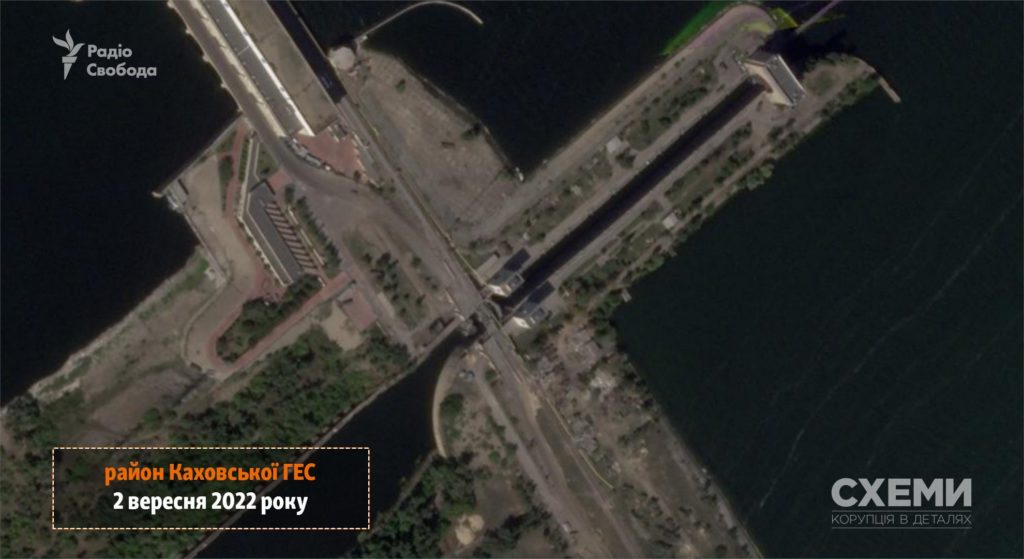
Once the footage of an obvious breach began circulating around 6-7 a.m., Leontiev changed his statement, saying that Ukrainian strikes hit the dam, causing a massive breach.
Apparent confusion took hold of Moscow’s propagandists as they flailed around trying to figure out the required narrative.
Some came out to celebrate it, pointing out the obvious benefits it brings to the Russian side. A video of an occupying soldier admitting Russia’s complicity also began to circulate
online.
As the real scale of the destruction was becoming apparent, the Kremlin tried to shift to blame to Ukraine, saying Kyiv did it as a distraction from its floundering counteroffensive – which had not even begun at the time of the incident.
Russian messaging on Kakhovka dam explosion inconsistent, challenging official accusation
4. Ukrainians have the most to lose from the Kakhovka dam's destruction
Regarding Carlson's central argument, he claims Russia would not blow up “its own dam” in “Russian” territory. Ignoring such liberal use of the “Russian” adjective, the Dnipro River in Kherson Oblast was a dividing line between Ukrainian and Russian forces since late 2022.
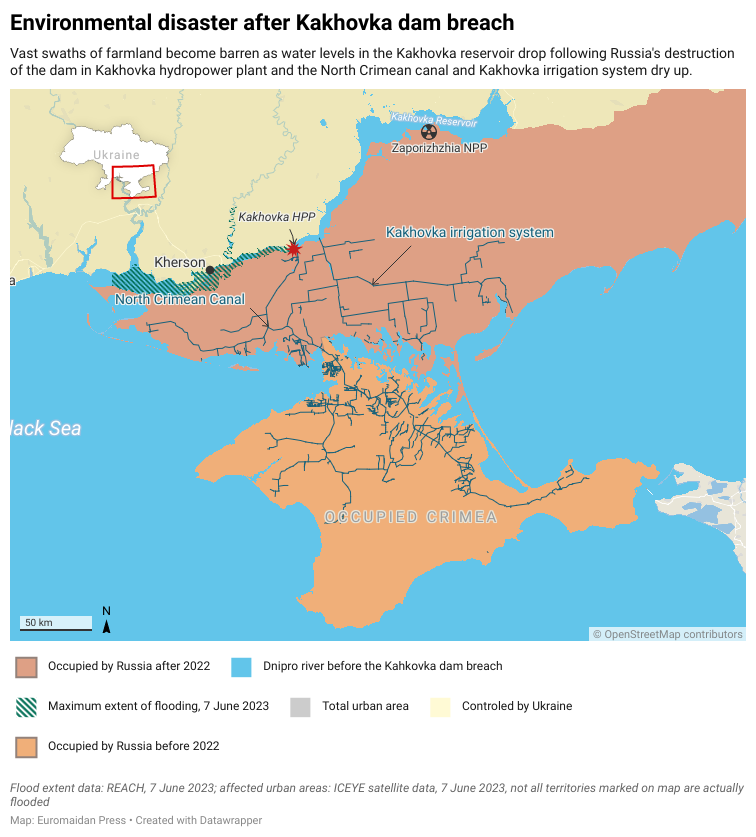
As the current events clearly illustrate, the flooding affects both banks of the river.
The territory that Carlson describes as Russian is, in fact, a Russian-occupied portion of Ukraine. While Kyiv struggles to save as many people as it can from the government-controlled left bank, on the other side, Russia is reportedly not allowing evacuations, safe perhaps for those who hold Russian passports.
Ukrainian farmers are set to lose tens of thousands of hectares of productive land and agriculture might not be possible in southern Ukraine in the near future, with a water crisis looming in four Ukrainian obalsts.
Hundreds of thousands of people may lose access to drinking water, and the disaster threatens food security and energy grid stability in the country.
Toxic substances, absorbed by the river, are set to poison the soil and water. As mentioned above, the Zaporizhzhia nuclear plant is also put at risk.
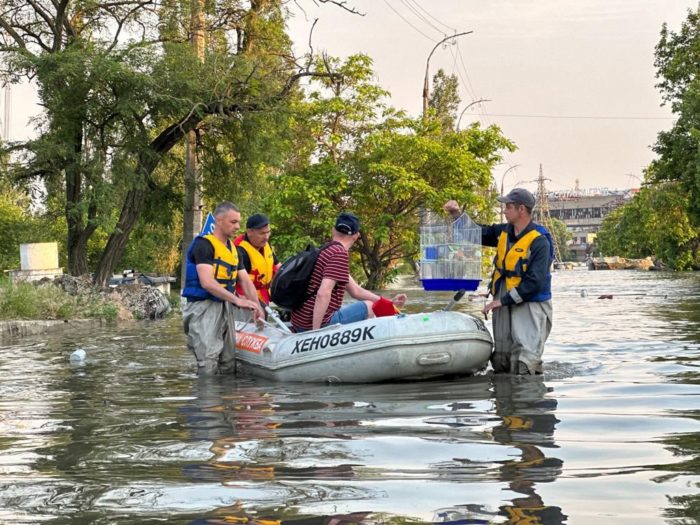
Credit: Ukraine's State Emergency Service.
Finally, even though it is not certain that Ukraine’s long-awaited counteroffensive was meant to involve forcing the Dnipro crossing in Kherson, the dam breach most likely put a stop to any such plans.
The Polish general Waldemar Skrzypczak said it will likely take weeks before the crossing can become functional.
Although Ukraine’s officials announced that the event will not hinder the counteroffensive plans, and the current military advances are taking place mainly in Zaporizhzhia and Donetsk oblasts, the fact remains that it was Kyiv who was planning to go on the offensive, while Russia was reading for a defense.
Enlarging a major natural barrier would clearly benefit the defender and put constraints on Ukraine’s options. Kyiv's Defense Ministry later said that Moscow used the breach to reposition some of its forces from Kherson Oblast to reinforce Zaporizhzhia and Donetsk sectors, the key point of Ukraine's offensive.
There are two most common arguments on what Ukraine had to gain from the disaster: cutting water access to Russia-occupied Crimea and the damage it wrought to Russian positions near the Dnipro River.
Crimea was actually cut off from the Dnipro River water supply since the Russian occupation in 2014, and the peninsula has faced water shortages over the following years. Russian occupying forces restored the flow from the river through the North Crimean Canal shortly after the invasion in February 2022. Consequently, cutting off Crimea's water supply was possible without blowing the dam; Ukraine only needed to regain full control of the Kakhovka reservoir.
However, it is difficult to see Ukraine's strategic advantage in cutting off water supply to Crimea, an arid peninsula it is dedicated to recapturing. Crimea survived during 2014-2022 without water from the Dnipro, albeit with inconveniences. Therefore, the collateral damage that Ukraine has received in the form of a water crisis in four oblasts
greatly exceeds any possible gains it would get from depriving Crimea of this water source.
The flooding also reportedly caused serious damage to Russia's defense lines near the river, including military equipment, trenches, and personnel. However, it also caused Ukraine to lose a bridgehead and evacuate from the Dnipro islands. Moreover, the flooded territory below the dam and the drying up Kakhovka reservoir have created vast swaths of boggy territory -- an impregnable obstacle for heavy equipment, -- impeding Ukraine's offensive in this direction for many weeks. So, arguably, the dam's destruction has caused more complications for Ukraine than for Russia.
5. Limited explosion gone wrong?
A potential explanation for such self-inflicted damage is that Russian forces planned only a limited explosion to enlarge the river and prevent Ukrainians from crossing, or simply to distract Kyiv's attention before the upcoming counteroffensive.
The operation went wrong, however, and the breach was more extensive than expected.
On 6 June, hours after the disaster, Zelensky cited Kyiv's intelligence reports that the sabotage was intentional but conducted "chaotically," allowing Russian equipment to be flooded.
The Security Service of Ukraine (SBU), the country's counter-intelligence, published an intercepted call on 9 June, featuring alleged Russian soldiers discussing the sabotage.
"(Ukraine) didn't strike it. That was our sabotage group. They wanted to scare people with this dam," said the person identified by the SBU as a Russian serviceman. "It didn't go according to plan, and (they did) more than they planned for."
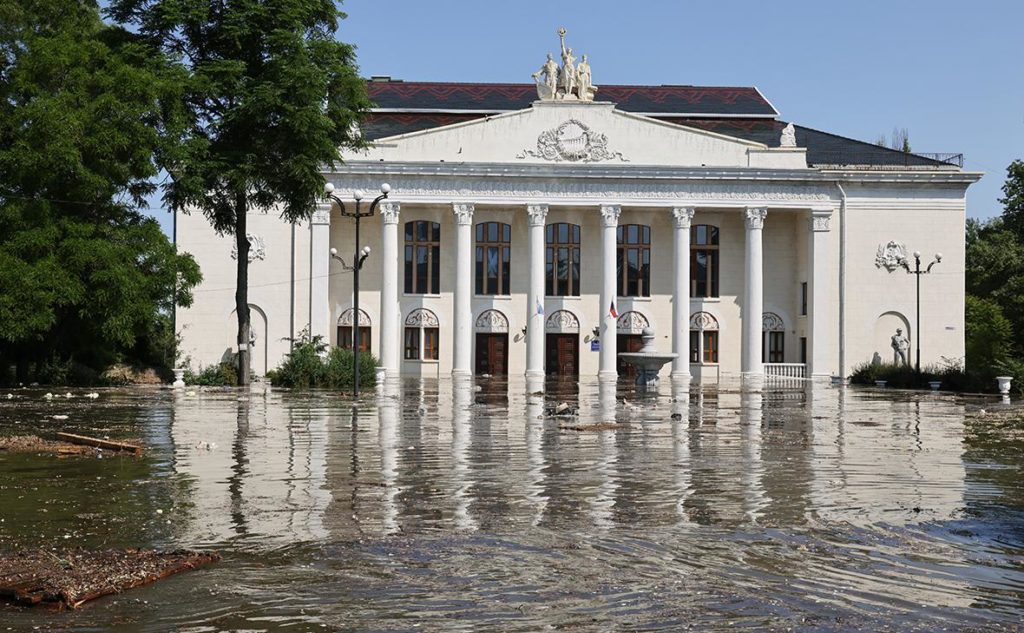
This version of events is yet to be confirmed by independent sources.
However, Eliot Higgins from the investigative outlet Bellingcat points out that while the locals heard an explosion sometimes around 2:20 a.m., video footage shows another small blast at 2:46 a.m., followed by a larger explosion.
Measurements by Norwegian experts also show limited seismic activity around 2:30, which the Ukrainian intelligence estimate as the time of the initial explosion, and then a major blast at 2:54.
A possible theory explaining this sequence could be that the initial denotation caused dislodged mines, previously planted by the Russians, to go off as well, causing major collateral damage.
Some US sources provide other explanations, for example, that an attempt at a limited, controlled explosion made the dam succumb to the mounting water pressure or the previously sustained damages. Even in these versions, the initial blast set off the cascade of events.
While the US officials did not yet dare to provide a conclusive account of what happened, the White House said that Russia is ultimately to blame, as it was illegally occupying the dam. American intelligence analysts also point fingers at Moscow.
The exact sequence of events is yet to be established. However, the balance of facts and motives makes the idea that Ukraine unleashed this cataclysm on itself highly unlikely.
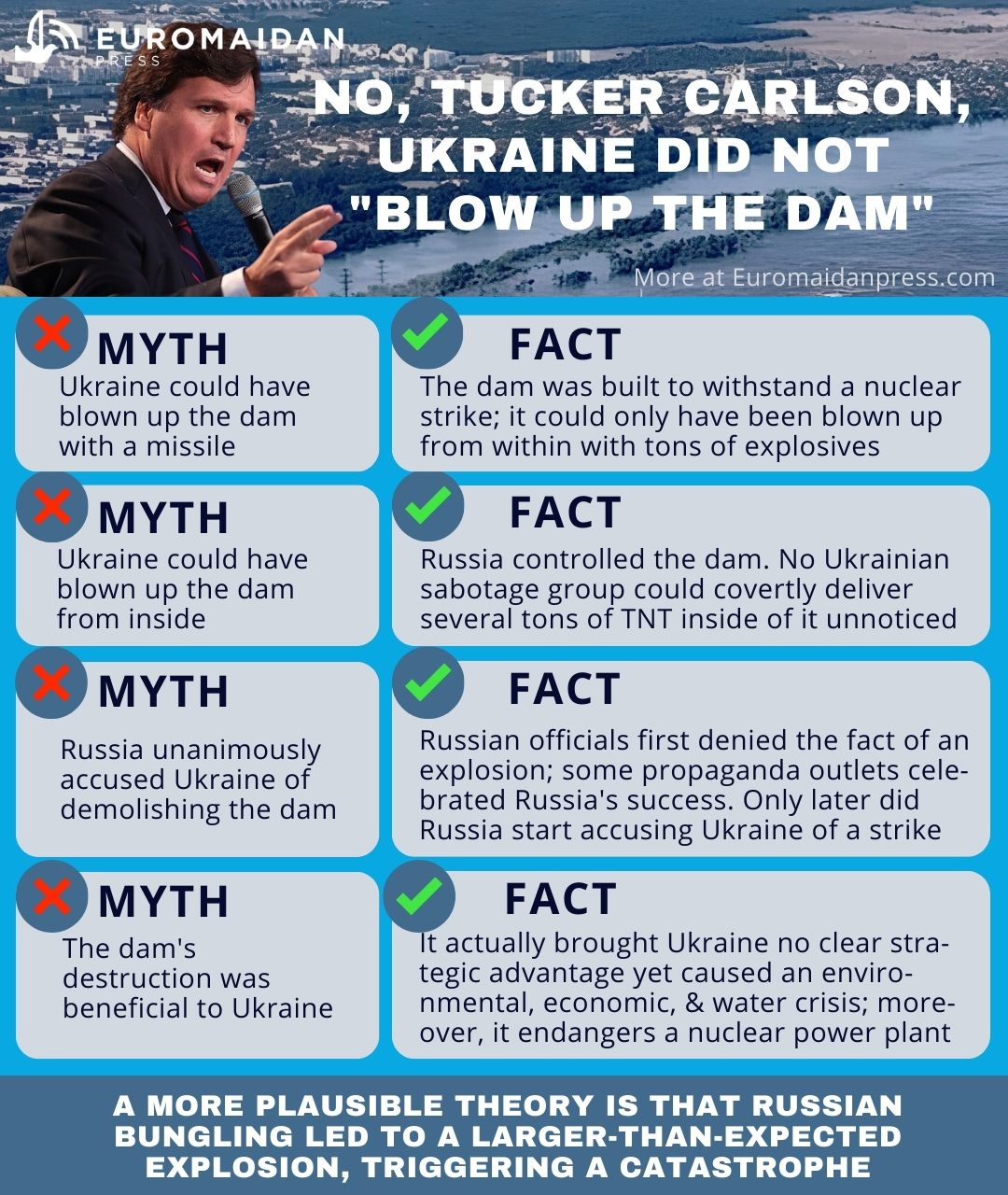
Related:
- Kakhovka dam breach: Hundreds of Ukrainians drown as Russia prevents evacuation, seals off flooded towns
- Earwitnesses recall hearing explosions on night when Nova Kakhovka dam collapsed
- Seismic signals indicate Kakhovka dam explosion – NORSAR
- Russian sabotage group blew up Kakhovka dam; it didn’t go as planned, SBU intercept alleges
- Kakhovka Dam was built to withstand nuclear strike, couldn’t be destroyed from outside – Ukrhydroproject engineering company
- Russian messaging on Kakhovka dam explosion inconsistent, challenging official accusation
- European Parliament recognizes Kakhovka dam destruction as a war crime committed by Russia
- No, the Kakhovka dam could not have collapsed on its own
- Ukrainian dam engineer rules out self-destruction of Kakhovka dam

